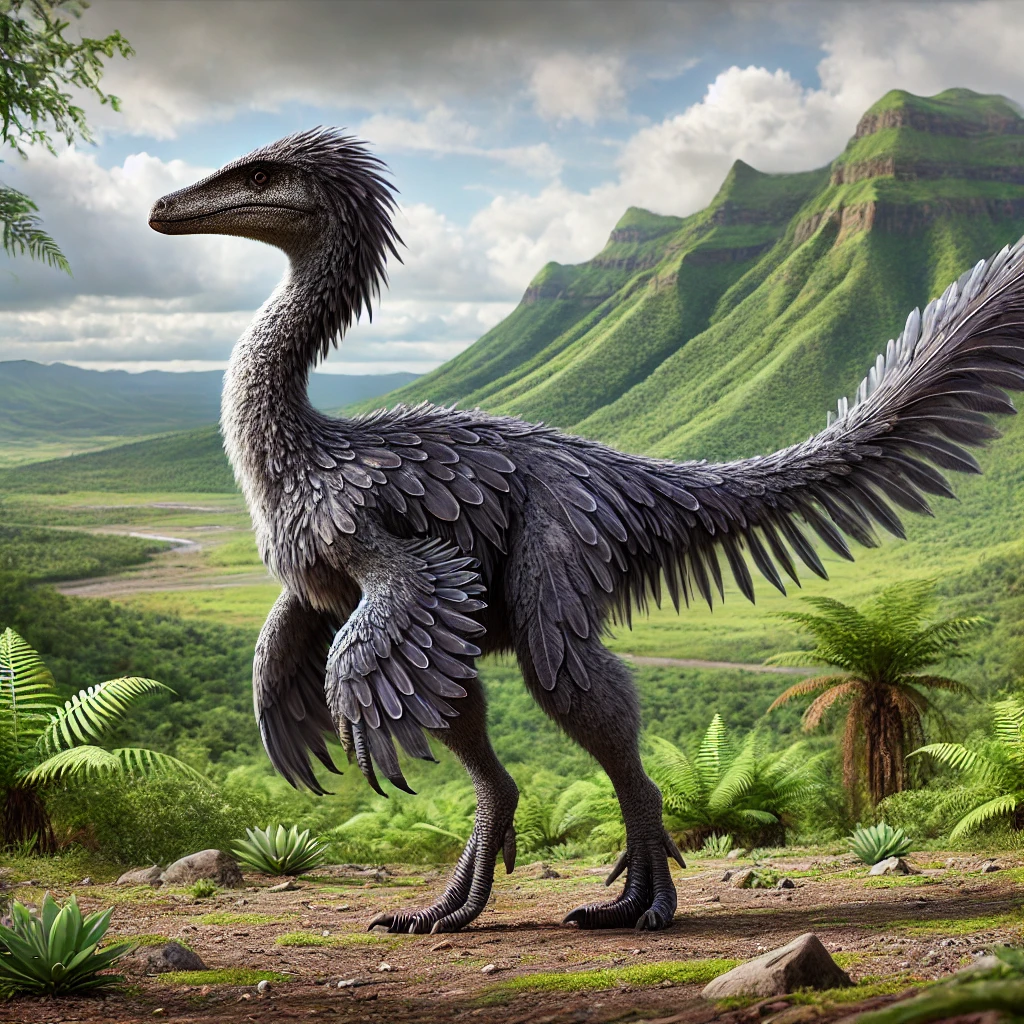Garudimimus
Pronunciation:
Gah-roo-dih-my-mus
Name Meaning:
“Garuda mimic” (Named after the Garuda, a bird-like creature from Hindu and Buddhist mythology)
Dinosaur Classification:
- Kingdom: Animalia
- Phylum: Chordata
- Class: Reptilia
- Order: Saurischia
- Suborder: Theropoda
- Family: Ornithomimosauria
- Genus: Garudimimus
- Species: G. brevipes
Dinosaur Description:
Garudimimus is a lesser-known theropod dinosaur from the Late Cretaceous period, approximately 85 to 80 million years ago. It belonged to the group known as ornithomimosaurs, which were often called “ostrich dinosaurs” because of their bird-like appearance. However, Garudimimus is considered a more primitive member of this group, with features that distinguish it from its more derived relatives like Ornithomimus and Struthiomimus.
Garudimimus was a bipedal dinosaur with a light, slender frame, adapted for fast running. Its body was relatively small compared to other theropods, with an estimated length of around 13 feet (4 meters). Its long legs, combined with a lightly built body, suggest it was an agile runner, likely using its speed to escape predators.
What sets Garudimimus apart from its more famous relatives is its feet. Unlike other ornithomimosaurs, which had three toes, Garudimimus retained a small, vestigial fourth toe on each foot. This primitive feature suggests that Garudimimus represents an early stage in the evolutionary transition towards the more advanced ornithomimosaurs.
The skull of Garudimimus was also notable. It was relatively short and deep compared to later ornithomimosaurs, with a beak-like mouth, although there is no clear evidence of teeth. This has led scientists to hypothesize that Garudimimus may have been omnivorous, feeding on both plants and small animals.
Though not as well-known as other dinosaurs in its group, Garudimimus helps to paint a picture of the evolutionary progression of theropods from predatory meat-eaters to more specialized forms that incorporated different diets and behaviors. Its discovery in Mongolia highlights the rich dinosaur diversity of the Late Cretaceous period in Asia.
Dinosaur Diet and Behavior:
Garudimimus is thought to have been omnivorous. With its beak-like mouth and lightly built body, it likely fed on a variety of plants, small invertebrates, and possibly small vertebrates. Its long legs suggest it relied on speed to evade predators, and its overall body structure points to a lifestyle that combined grazing with opportunistic hunting or scavenging.
Dinosaur Size:
Garudimimus was about 13 feet (4 meters) in length, making it a medium-sized ornithomimosaur.
Dinosaur Weight:
Garudimimus is estimated to have weighed around 200–300 kg (440–660 lbs), which is relatively light for its size, enhancing its ability to run swiftly.
Fossil Discoveries:
The first and only major fossil of Garudimimus was discovered in 1981 in the Nemegt Formation of Mongolia. This formation is known for its rich fossil record, particularly of Late Cretaceous dinosaurs. The discovery of Garudimimus provided valuable insight into the evolution of ornithomimosaurs, particularly their early development and diversification in Asia.
What Period Did The Dinosaur Live:
Garudimimus lived during the Late Cretaceous period, around 85 to 80 million years ago.
Notable Facts or Trivia:
– The name “Garudimimus” means “Garuda mimic,” referring to the bird-like creature from Hindu and Buddhist mythology.
– It had a small, vestigial fourth toe, unlike more advanced ornithomimosaurs.
– Garudimimus represents an early stage in ornithomimosaur evolution, showing primitive features not seen in its later relatives.
Scientific Significance:
The discovery of Garudimimus is significant because it provides insight into the evolutionary development of ornithomimosaurs. It retains more primitive characteristics, such as a vestigial fourth toe, which help paleontologists understand the transition from earlier theropods to the more specialized, ostrich-like dinosaurs of the Late Cretaceous. Additionally, its discovery in Mongolia contributes to the understanding of dinosaur diversity in Asia during this time.
Extinction & Legacy:
Like many other non-avian dinosaurs, Garudimimus went extinct by the end of the Cretaceous period, approximately 66 million years ago. Although it is not as famous as some of its relatives, Garudimimus plays an important role in understanding the diversity and evolutionary history of ornithomimosaurs. Its discovery in Mongolia adds to the rich fossil record of this region, shedding light on the diversity of theropods in Late Cretaceous Asia.

